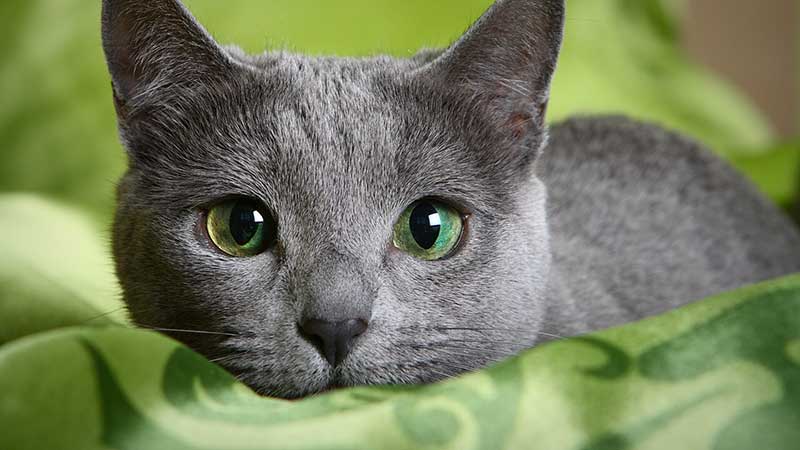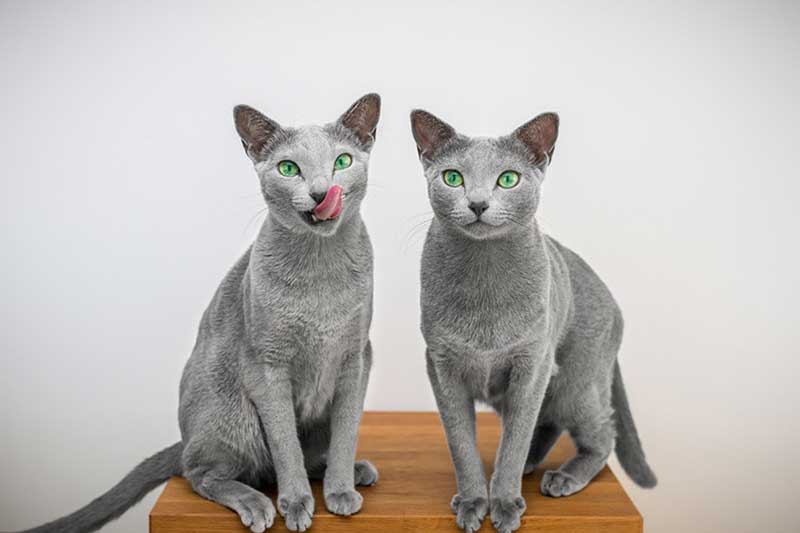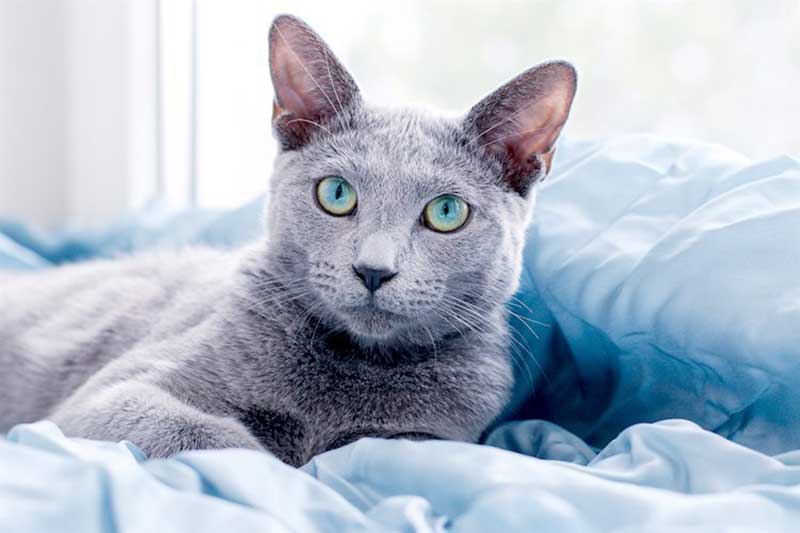Russian Blue Cats History and Care
History of Russian Blue Cats
Origins and Early Development
The exact origins of Russian Blue cats remain somewhat of a mystery. It is believed that these cats first appeared in the port of Arkhangelsk, Russia, during the 17th century. Sailors and traders brought them on their ships, where they were valued as excellent rat catchers due to their hunting skills and agility. Over time, Russian Blue cats gained popularity among Russian nobility and the upper class. They were treasured companions known for their luxurious blue-gray coat, emerald-green eyes, and graceful presence. These cats were even rumored to bring good luck to their owners.Recognition as a Breed
The Russian Blue breed’s formal recognition and development began in the late 19th century. Cat enthusiasts and breeders started selectively breeding these cats to maintain their distinctive traits. However, the breed’s progress was interrupted by the turmoil of World War II, which significantly impacted the Russian Blue population. Fortunately, dedicated breeders in England and Scandinavia played a crucial role in preserving and reviving the Russian Blue breed. They carefully selected and bred the surviving cats to restore the breed’s original characteristics. The breed eventually gained recognition from cat associations worldwide and continues to enchant cat lovers to this day.
Characteristics of Russian Blue Cats
Physical Appearance
Russian Blue cats are medium-sized, muscular cats with a compact body and a graceful, elegant stance. Their most striking feature is their short, dense, and plush double coat, which gives them a distinct bluish-gray appearance. The coat is known for its silver-tipped guard hairs, creating a shimmering effect in the light. These cats have striking emerald-green eyes that provide a beautiful contrast to their coat. Their eyes are large, round, and expressive, reflecting their intelligence and curiosity. Russian Blue cats have a wedge-shaped head with high cheekbones, giving them a sweet and gentle facial expression.Personality Traits
Russian Blue cats are known for their gentle and affectionate nature. They are typically reserved and may take some time to warm up to new people and environments. However, once they form a bond with their owners, they become incredibly loyal and loving companions. These cats are intelligent and curious by nature. They enjoy exploring their surroundings and engaging in play. Russian Blues are known for their acrobatic abilities, and they can often be found climbing, jumping, or chasing toys with great agility. Despite their playful nature, they are generally calm and quiet cats, making them an excellent choice for individuals seeking a serene and peaceful pet.Russian Blue Cats as Pets
Suitability for Different Lifestyles
Russian Blue cats are well-suited to various lifestyles. They adapt well to living in apartments or smaller spaces, thanks to their moderate size and lower activity level compared to some other cat breeds. However, it’s important to provide them with sufficient mental stimulation and play opportunities to keep them entertained and happy. These cats thrive in a stable and calm environment, making them an ideal choice for individuals who prefer a more peaceful home atmosphere. While they appreciate a routine, they also enjoy interactive playtime and the opportunity to explore their surroundings. Russian Blue cats are excellent companions for individuals or families seeking a loving and undemanding pet.Bonding with Owners
Russian Blue cats have a strong capacity for forming deep bonds with their owners. They are known to be particularly devoted to their human companions and often choose a special person in the household to become their primary caregiver. These cats enjoy spending time with their owners, whether it’s snuggling on the couch, playing interactive games, or simply being in their presence. To foster a strong bond with your Russian Blue cat, it’s essential to provide them with love, attention, and regular social interaction. Engaging in daily play sessions and providing them with a safe and comfortable environment will help them feel secure and happy in your home.Socializing with Other Pets
Russian Blue cats generally get along well with other pets, including dogs and other cats, provided that proper introductions and socialization are carried out. These cats are not overly dominant or territorial, making them more receptive to new companions. When introducing a Russian Blue cat to another pet, it’s important to do so gradually and under supervised conditions. This allows the animals to become familiar with each other’s scents and gradually form positive associations. With patience and proper socialization, Russian Blue cats can coexist harmoniously with other pets, creating a peaceful and loving multi-pet household.
Care and Maintenance
Grooming
Russian Blue cats have a low-maintenance coat that requires minimal grooming. Their short double coat rarely mats or tangles, making it easy to keep them looking their best. Regular brushing with a soft-bristle brush or a grooming mitt will help remove loose hairs and keep the coat shiny and healthy. Additionally, it’s important to provide your Russian Blue cat with appropriate scratching posts or pads to help maintain their claws. Trimming their nails regularly and providing dental care, such as brushing their teeth, will contribute to their overall well-being.Nutrition and Diet
A balanced and nutritious diet is essential for the health and vitality of your Russian Blue cat. Opt for high-quality cat food that meets their specific nutritional needs. Consult with your veterinarian to determine the appropriate feeding schedule and portion sizes based on your cat’s age, weight, and activity level. Ensure that your cat has access to fresh water at all times. Proper hydration is crucial for maintaining their overall health and preventing urinary tract issues, which can be more common in some cat breeds.Exercise and Play
While Russian Blue cats have a moderate activity level, they still require regular exercise and mental stimulation to prevent boredom and obesity. Engage your cat in daily play sessions using interactive toys, such as wand toys or puzzle toys that provide mental challenges. This will help satisfy their hunting instincts and keep them physically active. Providing vertical spaces, such as cat trees or shelves, allows your Russian Blue cat to climb and explore their environment. This helps fulfill their natural desire to observe their surroundings from an elevated position.Health Considerations
Russian Blue cats are generally a healthy breed with no specific breed-related health concerns. However, as with any cat, it’s important to schedule regular veterinary check-ups to monitor their overall health and detect any potential issues early on. Vaccinations, parasite prevention, and dental care should also be part of their routine healthcare. Observe your cat for any changes in behavior, appetite, or litter box habits, as these can be early signs of underlying health problems. Maintaining a clean and stress-free environment, providing a balanced diet, and ensuring regular exercise will contribute to the overall well-being and longevity of your Russian Blue cat.Overcoming Insomnia: Strategies for Better Sleep
Frequently Asked Questions
Are Russian Blue Cats hypoallergenic?
While no cat breed is completely hypoallergenic, Russian Blue cats are often considered more suitable for individuals with allergies. They produce fewer allergenic proteins, called Fel d 1, compared to other breeds, reducing the likelihood of triggering allergies in sensitive individuals. However, it’s essential to spend time with a Russian Blue cat before making a final decision, as individual allergies can vary.How long do Russian Blue Cats live?
Russian Blue cats have an average lifespan of 15 to 20 years or even longer with proper care. They are generally a healthy breed and can enjoy a long and happy life when provided with a balanced diet, regular veterinary care, and a loving environment.Do Russian Blue Cats require special care?
Russian Blue cats have no specific care requirements beyond the basics of cat care. Regular grooming, a balanced diet, exercise, and social interaction are essential for their well-being. They thrive on love and attention from their owners, so providing a nurturing and stimulating environment is crucial.Are Russian Blue Cats good with children?
Yes, Russian Blue cats can be excellent companions for children. They are generally gentle, patient, and tolerant, making them suitable for households with well-behaved children. As with any pet, it’s important to teach children how to interact respectfully and gently with the cat to ensure a positive and harmonious relationship.Where can I find reputable Russian Blue breeders?
If you’re interested in getting a Russian Blue cat, it’s crucial to find a reputable breeder who prioritizes the health and well-being of their cats. Look for breeders who are registered with recognized cat associations and follow ethical breeding practices. Additionally, consider adopting a Russian Blue cat from a local animal shelter or rescue organization, as there are often loving cats in need of forever homes.What is the History and Care of French Bulldogs?
The history and care of French Bulldogs are intriguing. Originating in the 1800s, these adorable canines were bred as companion dogs. They quickly gained popularity due to their affectionate and adaptable nature. French Bulldogs require minimal exercise but demand consistent attention. Despite their unique health concerns, proper nutrition, regular vet check-ups, and exercise can help maintain their well-being. Understanding the french bulldog breed details is crucial for providing the best care.








